Mad Hedge Biotech and Healthcare Letter
August 8, 2023
Fiat Lux
Featured Trade:
(A DISCOUNTED PHOENIX SET TO RISE)
(BMY), (JNJ), (GSK), (MRK)
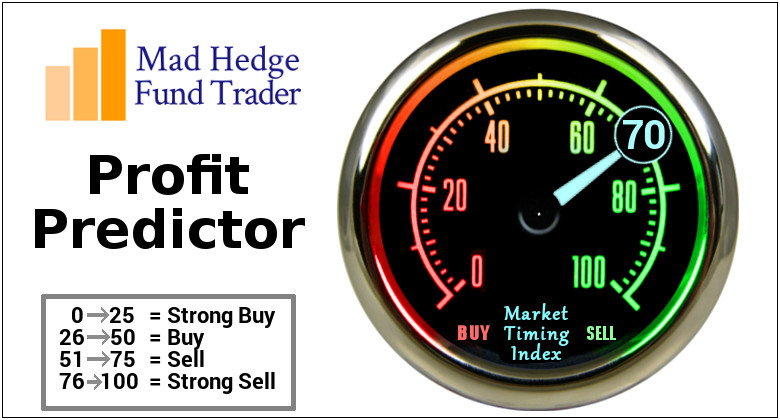
Mad Hedge Biotech and Healthcare Letter
August 8, 2023
Fiat Lux
Featured Trade:
(A DISCOUNTED PHOENIX SET TO RISE)
(BMY), (JNJ), (GSK), (MRK)

The rollercoaster ride that is the equity market never fails to excite, surprise, and occasionally bemuse us. There's an erratic heartbeat in how it functions - illogical at times, downright whimsical at others. The upshot? Sometimes, great companies find themselves in the bargain bin of Wall Street – perfect for investors who love a good discount.
This is where Bristol Myers Squibb (BMY) comes in.
In the rear-view mirror of the past year, Bristol Myers Squibb hasn't exactly been the star of the stock market show. Its financial pulse has been somewhat weak, with lethargic revenue growth and, at times, flatlining completely. A big part of this has been the loss of patent exclusivity on a once superstar medication last year, causing its top line to struggle.
Flash forward to BMY dropping its Q2 2023 financial report, and the question is whether the company met the Street's expectations. Well, not exactly.
Let's dive into the numbers. The Q2 2023 revenue was a hefty $11.23 billion, albeit a 0.97% dip from the previous quarter and a 5.6% drop year-over-year. Non-GAAP net earnings clocked in at $3.7 billion or $1.75 per share, a quarter less than my earlier prediction.
The culprit? A steeper decline in Revlimid's sales than expected. The blockbuster sales were $1,468 million, a sizable 41.3% YoY drop, thanks to generics flooding the market and lower net selling prices in Europe.
Cue the traders and investors giving a thumbs down to the financials, sending the stock price spiraling down by 4.2% in just two days.
Over half a year, BMY's share price shrank by a whopping 16%, even with a bunch of positive clinical trial results and a flurry of medicine approvals.
Meanwhile, the bigwigs of the global cardiovascular and oncology drug market, Johnson & Johnson (JNJ), GSK (GSK), and Merck (MRK), have been doing a victory lap.
Still, there’s a silver lining here.
Bristol Myers is currently strutting around with a forward price-to-earnings (P/E) ratio of just 8. If you stack that against the pharmaceutical industry's average of 15.3, our friend Bristol Myers looks appealing. This is especially true when you consider the company is far from down for the count and has quite a few tricks up its sleeve to stage a solid comeback.
Projected revenue for Bristol-Myers Squibb for Q3 2023 lands somewhere in the ballpark of $10.8 billion to $11.92 billion, which, sure, marks a 4.5% dip from Q2 expectations. But hold onto your hats because Bristol-Myers Squibb's revenue is projected to comfortably clear the bar and pull in a cool $11.35 billion.
The heroes of this victory? Groundbreaking drugs like Yervoy and Opdualag have become hotter than a two-dollar pistol in the medical world.
We're talking about a Q2 2023 sales total of $154 million for Opdualag alone, up a jaw-dropping 165.6% from Q2 2022. And let's not forget this medical marvel only debuted in March 2022 and has been selling like hotcakes thanks to its performance in clinical trials.
What's more, Bristol Myers Squibb has been as busy as a bee, adding nine innovative medicines to its repertoire over the last three years. These new kids on the block are set to step up to the plate and replace older, soon-to-be patent-less drugs. They're also expected to drive sales growth into the stratosphere for the foreseeable future.
Bristol Myers Squibb is expected to report continuous growth, thanks to its proven clinical trials and potential to expand its labels. The company is already rolling up its sleeves to test the safety and efficacy of Camzyos for conditions like non-obstructive hypertrophic cardiomyopathy and heart failure with preserved ejection fraction (HFpEF).
As we look towards the horizon of 2025, Bristol Myers forecasts an impressive revenue of $10 billion to $13 billion from its freshest batch of products. Considering it pulled in $2 billion last year from these drugs, that's not too shabby. But don't think it’s resting on its laurels. The company is already testing over 50 clinical compounds across a smorgasbord of trials.
Let's also pay attention to Bristol Myers' attractive dividend profile.
The company currently offers a yield of 3.5%, dwarfing the S&P 500's average of 1.5%. Plus, it has bumped its payouts by 43% over the last five years.
With a cash payout ratio of around 42%, there's much room for this trend to continue into the foreseeable future.
Despite recent stumbles on the revenue and stock value front, BMY is no slouch. Its unyielding character and unwavering commitment to ploughing funds into fresh offerings signal a robust comeback on the horizon.
So, in the immortal words of an old Wall Street sage, it’s time to "Buy low, sell high,” and BMY is looking like quite a bargain right now.
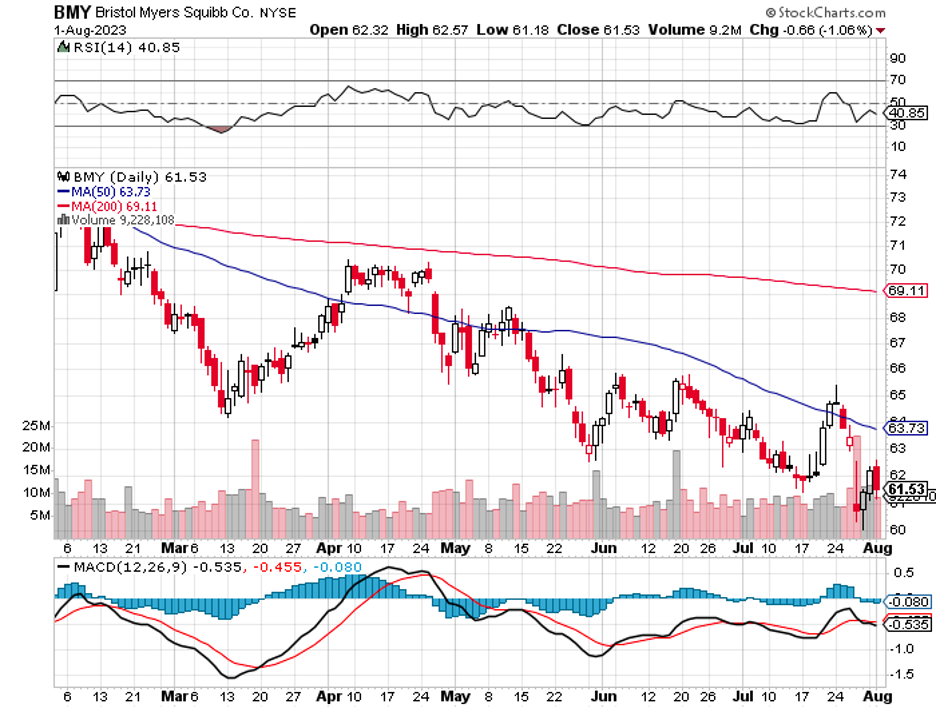
Mad Hedge Biotech and Healthcare Letter
May 23, 2023
Fiat Lux
Featured Trade:
(HUNTING FOR OPPORTUNITIES IN HEALTHCARE STOCKS)
(LLY), (NVO), (VTRS), (OGN), (MRK), (TEVA), (GI), (CNC), (PFE), (GILD), (AMGN)
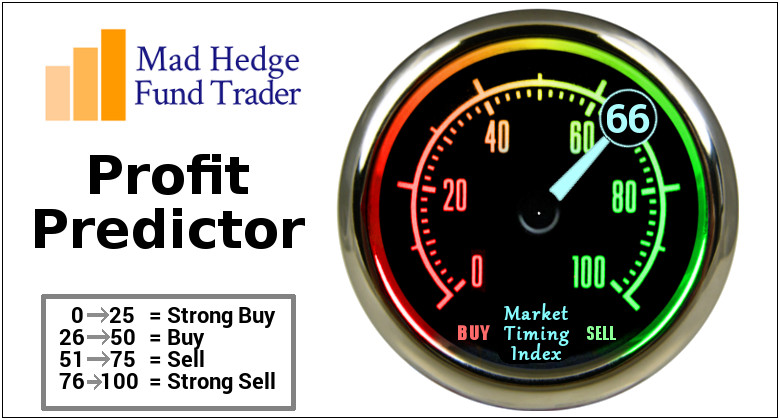
I've been riveted by the healthcare sector's most extravagant stocks lately.
Just look at Eli Lilly (LLY), with its jaw-dropping market value of $412 billion, making it the richest pure-play biopharma company ever. And right on its heels is Novo Nordisk (NVO), boasting a market value of $377 billion. It's enough to make your head spin.
But if you're on the hunt for value, these sky-high prices might leave you feeling a bit queasy. That's why I embarked on a mission to uncover some hidden gems in the healthcare sector.
Now, don't get me wrong. These stocks may be cheap for a reason, and it's crucial to exercise caution. When it comes to investment opportunities, it's essential to separate the diamonds in the rough from the fool's gold.
Enter Viatris (VTRS), a rising star in the generic drug manufacturing arena that has caught the attention of savvy investors seeking long-term holdings. But is it the real deal, or just another flash in the pan?
Viatris shows potential with solid revenue from branded generics like Lipitor, Viagra, and EpiPens. These household-name medicines have a lasting market demand. Plus, its generous 5.2% dividend yield surpasses the market average.
But here's the catch: Viatris is currently undervalued and has yet to prove its growth potential. Its stock price took a hit, and sales in the core generic and branded segments dipped. However, there's hope in the pipeline.
With a range of injectable generic medicines awaiting approval, Viatris could be at the forefront of the market.
By 2027, these programs could yield over $1 billion in annual revenue. While not a game-changer for the company's overall revenue, it sets the stage for future earnings growth.
At this stage, I don’t see Viatris as a slam-dunk investment. However, monitoring their strategic plan to reduce debt, improve efficiency, and drive growth is prudent. It's a work-in-progress worth monitoring for future opportunities.
Another company that caught my attention is Organon (OGN), a recent spinout from Merck (MRK) that focuses on women's health and biosimilars. This hidden gem trades at an attractive valuation of just 4.8 times earnings.
Organon & Co. is a pioneering developer and provider of prescription therapies and medical devices catering to contraception and fertility needs.
The female contraceptive market is projected to experience robust growth, with a compound annual growth rate (CAGR) of 8.5% from 2022 to 2027. Notably, Organon is among the top 5 major corporations addressing the demands in this market segment.
But that's not all.
Organon boasts a diverse portfolio that extends beyond women's health. They also offer biosimilar immunology products, two oncology treatments, hypertension therapies, respiratory solutions, dermatology products, non-opioid pain management pills, and cures for male pattern hair loss.
On its first day of official existence, June 3, 2021, Organon's management proudly announced a lineup of over 60 drug products to enhance female health, along with Merck's (MRK) former biosimilars portfolio.
The biosimilars market is projected to soar to $44.7 billion by 2026, showing an impressive CAGR of 23.5%.
As expected, the biosimilars arena has become a bustling hub with both established and emerging companies eagerly entering the space. For instance, Teva Pharmaceutical Industries Limited (TEVA) has high hopes for its biosimilar drug targeting arthritis treatment, expecting it to boost Teva's revenue significantly.
Organon has already witnessed promising revenue growth from its biosimilar drugs, with a remarkable 17% increase amounting to $116 million.
Several drug sales have experienced a surge of over 30% in the United States, Canada, and Brazil. Moreover, Organon's brands have shown strong performance in China and the Asia Pacific/Japan region.
Investing in women's health is not only a wise choice; it's a strategic move that can yield significant rewards for individual investors and portfolios. With Organon's innovative solutions, broad product portfolio, and forward-thinking approach, it stands out as a compelling opportunity in the market.
Now, let's take a look at some intriguing names that have found their way onto the list.
We have health insurance behemoth Cigna Group (GI), trading at a mere 9.9 times earnings, alongside the health insurer Centene (CNC) at 10.3 times earnings. Not to mention the presence of renowned drugmakers Pfizer (PFE), Gilead Sciences (GILD), and Amgen (AMGN) gracing this list of bargain stocks.
These seemingly cheap healthcare stocks warrant close attention for the savvy investor seeking hidden gems. Sure, the term "cheap" can sometimes be misleading, but within these underappreciated names lies the potential for hidden value waiting to be discovered.
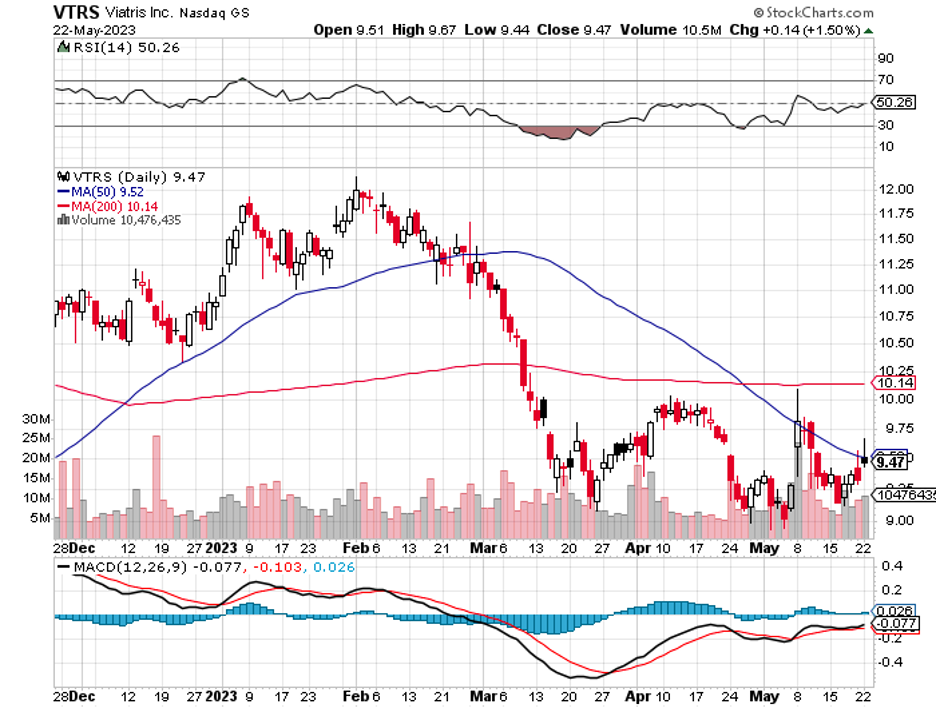
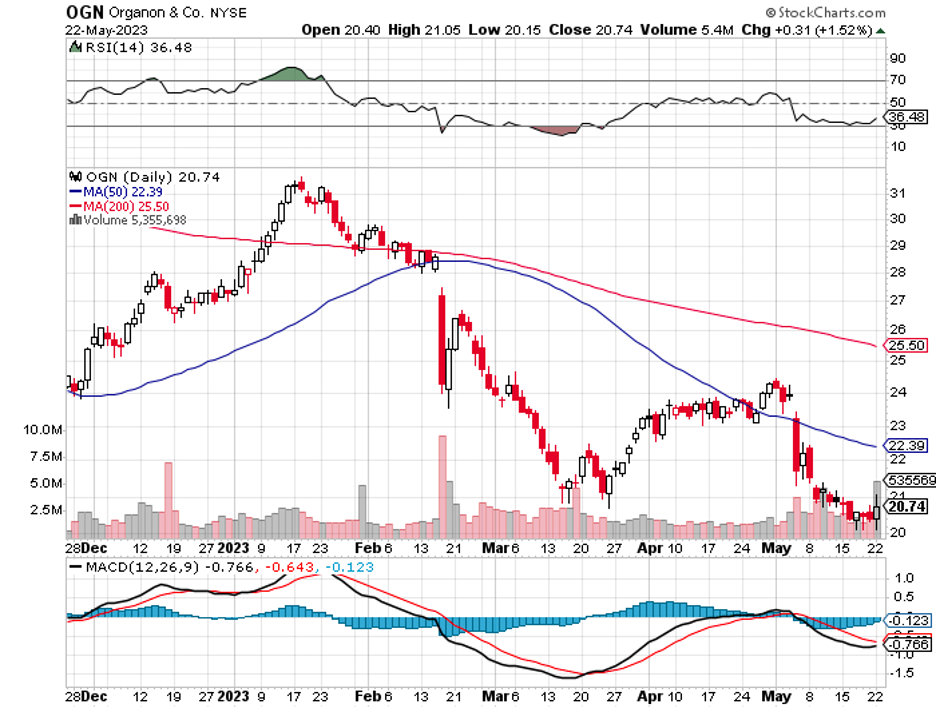
Mad Hedge Biotech and Healthcare Letter
April 25, 2023
Fiat Lux
Featured Trade:
(SMALL BIOTECHS, BIG OPPORTUNITIES)
(PFE), (SGEN), (MRK), (RXDX), (BMY), (BIIB), (ETNB), (KRTX), (MORF), (IDYA)
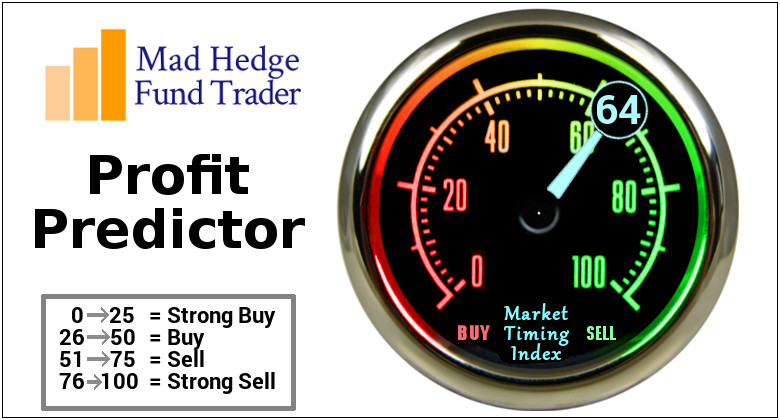
The biopharma sector has seen a flurry of merger and acquisition activity recently, and the trend seems to continue. This is good news for smaller biotech stocks looking to capitalize on the trend.
In the first quarter of 2023, the total healthcare and life sciences M&A in the United States reached roughly $71 billion, more than double the $28 billion seen in the same quarter in 2022. Notably, this figure includes Pfizer's (PFE) acquisition of Seagen (SGEN) for $43 billion.
Still, the situation isn't as dire as it may seem especially considering that in 2022, the total M&A spending in the U.S. dropped to about $300 million year over year from the $400 billion recorded in 2021.
The main culprit behind this trend appears to be higher interest rates, which have made financing a deal less appealing for buyers, particularly when there is the potential for a less optimistic profit outlook due to a slowing economy.
Even with these concerns, pharmaceutical deals have been far from stagnant since the end of the first quarter.
Merck (MRK), a biopharmaceutical company with a market capitalization of $288 billion, announced that it would purchase Prometheus Biosciences (RXDX) for roughly $11 billion, representing a premium of about 75% over the pre-announcement price. The announcement had a considerable impact on Prometheus stock, which saw a surge in value.
Shareholders of Prometheus enjoyed significant gains as Merck seeks to replace its revenue stream from cancer treatment Keytruda, which generates just over $20 billion annually.
Keytruda's patent is set to expire in 2028, leaving room for competitors to gain market share and making Merck's acquisition of Prometheus a critical move. For context, Prometheus's ulcerative colitis product alone has a total available market worth roughly $30 billion.
This deal could be just the beginning of a wave of new mergers and acquisitions in the biotechnology and healthcare industry. Experts note that we are entering a "smart optimism" period in the sector.
It makes sense for larger pharma companies to explore mergers and acquisitions in the current market for several reasons.
For one, many larger companies are seeking to revamp their drug pipelines. Take Bristol Myers Squibb (BMY), for example, which has a market capitalization of $146 billion. Sales of its myeloma treatment, Revlimid, likely peaked at just over $12 billion in 2021. As the patent for Revlimid expires, the company is expected to lose market share, causing sales to plummet to the low hundreds of millions.
While the company has several new drugs in development, it may still seek to acquire smaller firms to safeguard its future. However, given that Bristol has just over $9 billion in cash, any significant acquisitions it pursues could require taking on debt. Such a move would not be unprecedented, as Pfizer financed roughly 70% of its Seagen purchase with long-term debt.
Another big name that could be on the lookout for an attractive deal is Biogen (BIIB), a company with a market capitalization of $42 billion. Biogen is reportedly interested in the neuropsychiatric and inflammatory sectors and could strike a deal as early as the latter half of 2023.
Looking at things from a seller's point of view, many of these companies are now much less valuable than they once were on the public market and, therefore are easier targets for acquisition.
The SPDR S&P Biotech ETF (XBI) has taken a 50% hit from its all-time high set in February 2021. This is mainly due to higher interest rates, which have diminished the perceived value of future profits. Since many small biotechs are valued based on their projected earnings well into the future, this has significantly affected their stock prices.
Some biotech companies have been eyed as potential takeover targets due to their reduced market value.
One is 89bio (ETNB), with a market cap of $1.2 billion and a stock price falling by more than 50% from its all-time high, could be a potential target.
Similarly, Karuna Therapeutics (KRTX), which has a market cap of $7.4 billion and has seen a decline of almost 30% from its all-time high, is also considered an acquisition candidate.
Morphic Holding (MORF), with a market cap of $1.8 billion and a drop of more than 35% from its all-time high, and Ideaya Biosciences (IDYA), which has a market cap of $706 million and has lost almost half its value from its all-time high, could also be targeted for acquisition.
Overall, this is a promising period for the sector. So, take a moment to consider some of the smaller biotech firms in the market. Suppose these companies have a hard time finding interested buyers. In that case, there is still hope for shareholders as there's a chance that a larger corporation may step in and make an acquisition, leading to a substantial payout.
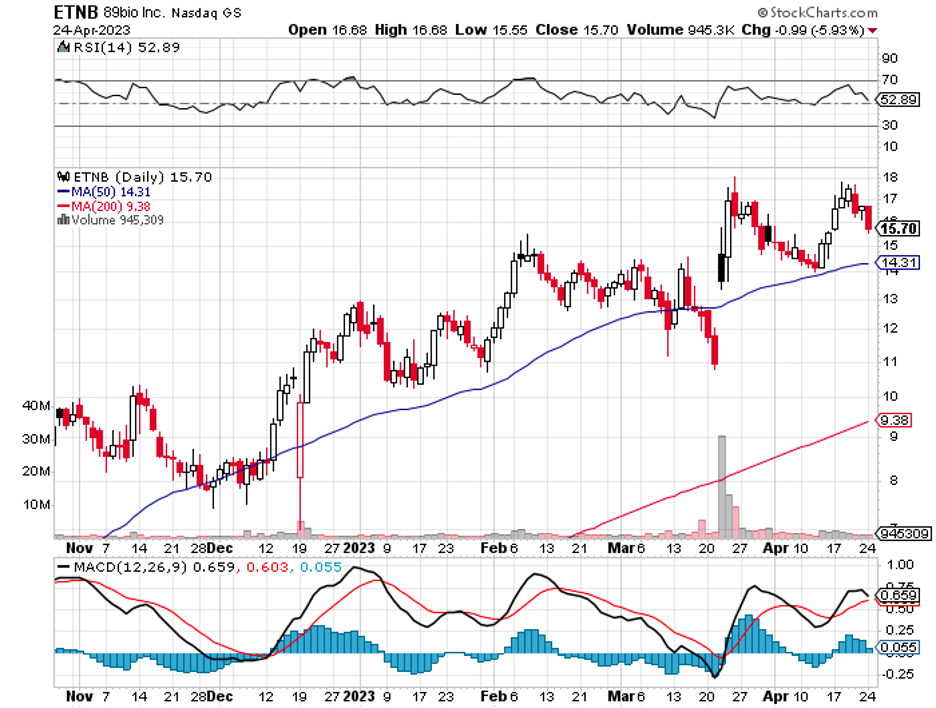
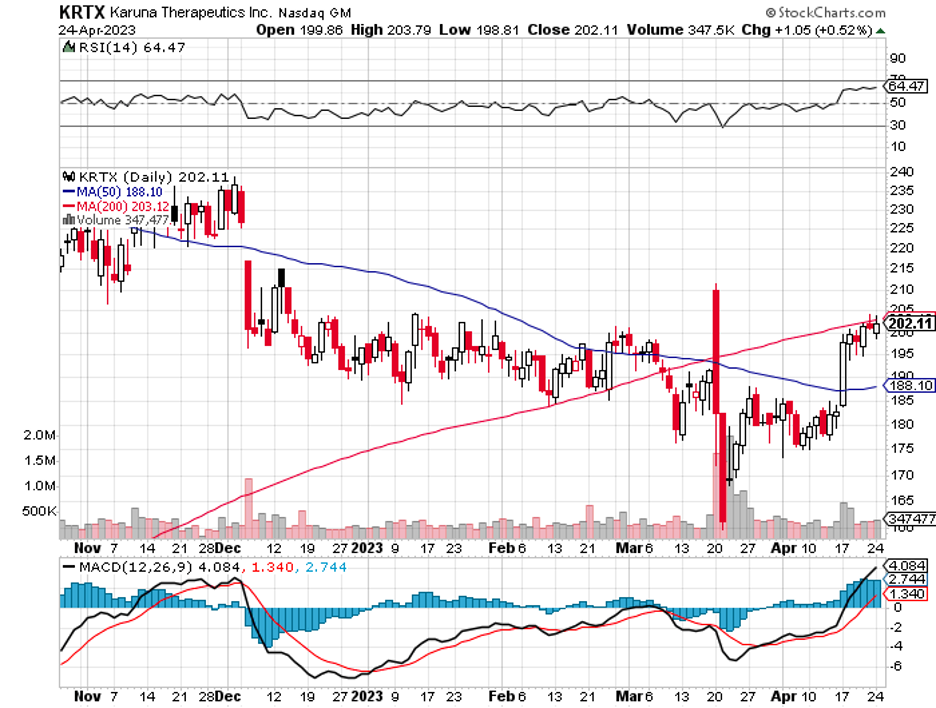
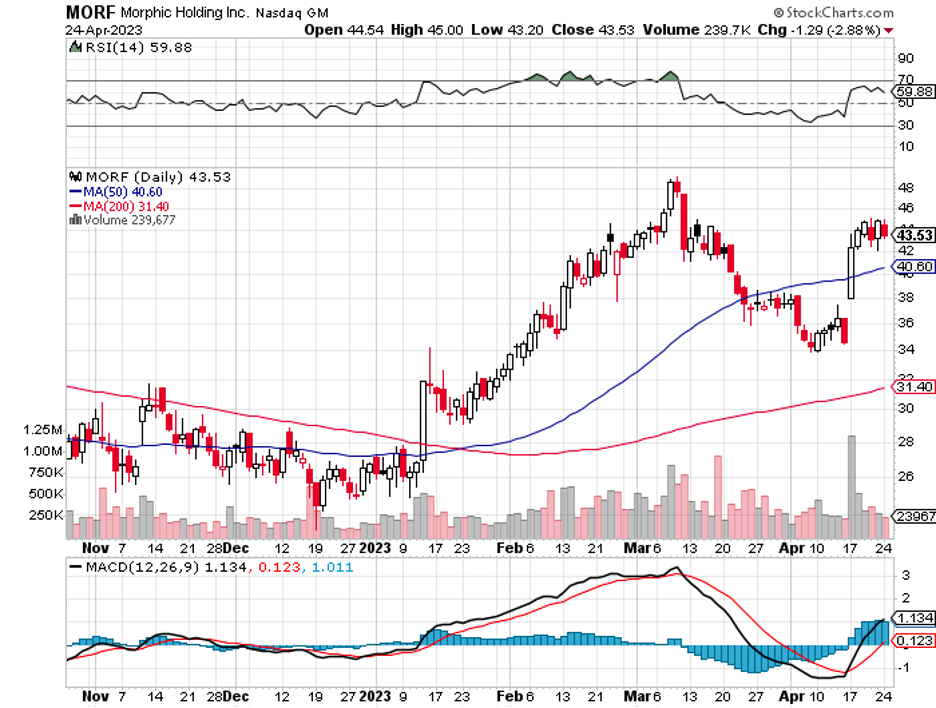

Mad Hedge Biotech and Healthcare Letter
April 20, 2023
Fiat Lux
Featured Trade:
(ANOTHER WILD RIDE IN BIOTECH)
(CRSP), (VRTX), (BLUE), (MRK), (MRNA),(RXDX)

The biotech industry is a rollercoaster of investment opportunities, where great successes and flops can easily be the difference between riches or ruin.
Companies like Moderna (MRNA) have seen this firsthand - going from a $4 billion valuation to nearly 15-fold that amount in just one successful drug launch resulting from their COVID vaccine development program. To rekindle investor interest in what may seem like an erratic space, giants such as Merck (MRK) are also putting money into promising companies; with its recent acquisition of Prometheus Biosciences (RXDX) evidence enough that even long-established pharmas recognize the potential rewards available within biotechnology markets.
Investors seeking the next big win in biotech should look beyond household names for potential gems.
Take CRISPR Therapeutics (CRSP), whose collaboration with Vertex Pharmaceuticals (VRTX) is taking exa-cel to new heights, and Bluebird Bio's (BLUE) progress on lovo-cel as just two examples of lesser-known science ahead of its time that could pay off handsomely in your portfolio.
Recent news shows that two upcoming treatments for sickle cell disease, exa-cel and lovo-cel, could be cost-effective if priced below $1.9 million - a figure the Institute of Clinical and Economic Review (ICER) concluded after conducting an extensive assessment of their financial aspects. Momentum is building as both companies aim to secure FDA approval soon; investor optimism in CRISPR continues to grow increasingly evident due to this good news.
Here’s a quick recap of the treatment’s market opportunity.
Sickle cell disease and thalassemia patients face a hefty financial burden over their lifetime, with disease-related expenses ranging from $4 million to $6 million.
As a gene-editing therapy, exa-cel is a complex treatment to manufacture and administer, which further justifies its potentially high price tag. With this innovative therapy, Vertex Pharmaceuticals and CRISPR Therapeutics aim to target 32,000 sickle cell disease (SCD) and thalassemia (TDT) patients in the United States and Europe, emphasizing the significant market opportunity for the companies.
The potential market for exa-cel, assuming a price point of $2 million, amounts to a staggering $64 billion opportunity.
While this price tag may seem steep, it is not unprecedented in the industry. Bluebird Bio, for instance, secured approval for its gene-editing medicine Zynteglo last year, pricing it at $2.8 million.
The question remains whether third-party payers will be willing to cover the high costs associated with these treatments. Case in point – Bluebird Bio exited the European market after being unable to secure favorable deals with third-party payers. As such, how exa-cel will fare in this challenging reimbursement environment is yet to be determined.
As CRISPR Therapeutics and Vertex Pharmaceuticals chart their path for the launch of exa-cel, they are keenly aware that pricing gene editing therapies rightly is critical.
Both companies have been in active dialogue with insurance providers and governmental programs like Medicaid to ensure this goal comes to fruition. Even if it means accepting modest prices for its product, there's still immense potential for exa-cel due to the lack of existing treatments meeting SCD and TDT patients' needs.
Given these details, where does CRISPR currently stand?
Investing in clinical-stage biotech stocks can be a tricky, with the potential rewards marred by the risks of what still lies ahead. However, for those brave enough to take on this challenge, there's an astronomical market opportunity at stake—the CRISPR Therapeutics and Vertex Pharmaceuticals tag team are vying against formidable foes like Bluebird’s Zynteglo as well as lovo-cel, one that could transform how SCD gene editing is treated if approved soon by FDA.
With a bigger war chest, however, Vertex may have an edge in the race, but CRISPR is no slouch, with an agreement in place to retain 40% of exa-cel's profits. It remains to be seen who will come out on top remains to be seen, but the potential rewards are undeniably huge.
As investors eagerly await the approval of exa-cel, CRISPR Therapeutics' promising gene-editing therapy for sickle cell disease, the company's market capitalization may not reflect the therapy's massive potential.
Assuming that exa-cel delivers and truly becomes a multi-billion-dollar opportunity, CRISPR Therapeutics and Vertex Pharmaceuticals are poised to capture a significant market share with their forthcoming therapies. With the advantage of a stronger cash position, Vertex could push the scales in its favor, helping with the therapies' launch.
Even conservatively assuming profits of $12 billion, CRISPR Therapeutics' market cap of $3.6 billion does not do justice to the company's potential.
While it's still early days, CRISPR Therapeutics' other promising programs should not be ignored. The company is somewhat fairly valued, but exa-cel's approval could send its shares soaring.
Beyond the financial benefits, the success of exa-cel could also bolster CRISPR Therapeutics' position as a leader in gene editing technology.
The company's pipeline includes promising programs in immuno-oncology and rare diseases, and the sustained revenue generated by exa-cel could fuel further research and development efforts. This bodes well for the stock's prospects, as CRISPR Therapeutics continues to advance the frontiers of innovative medicine.
Meanwhile, another possibility for CRISPR is a buyout.
The gene-editing market may be small, but its rapid growth rate of nearly 30% until 2030 presents an enticing opportunity for healthcare businesses to pursue. The market is estimated to reach less than $15 billion by then. With an approved gene-editing therapy, CRISPR Therapeutics could be a valuable asset for a larger healthcare company seeking growth.
At a market cap of less than $4 billion, CRISPR Therapeutics is an affordable acquisition for a top healthcare company looking to expand its portfolio. The company's favorable balance sheet, with over $1.8 billion in cash and short-term investments and modest debt of just over $244 million, makes it even more appealing as a potential acquisition.
The acquisition of CRISPR's business wouldn't come with a lot of headaches, and it could instantly boost a company's growth prospects.
With the sustained revenue from exa-cel and the potential for more clinical and regulatory wins in its other programs, CRISPR Therapeutics' gene-editing pipeline is worth considering for any healthcare business looking to capitalize on the promising growth opportunities in this market.
Overall, the potential for significant upside in the short and mid-term, combined with the company's pioneering spirit, makes CRISPR Therapeutics an attractive investment opportunity for discerning investors.
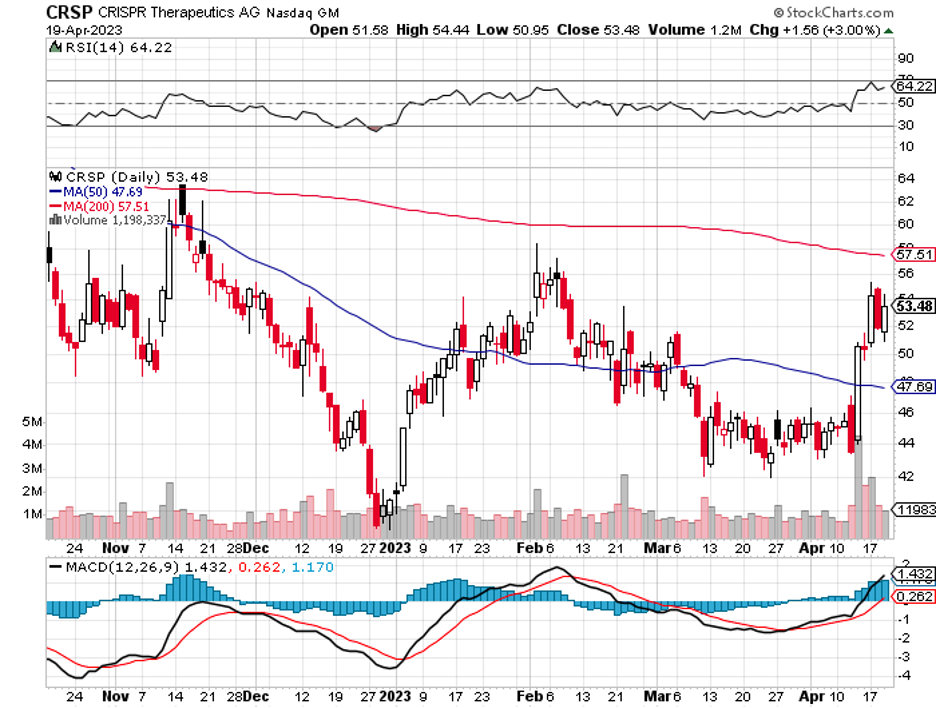
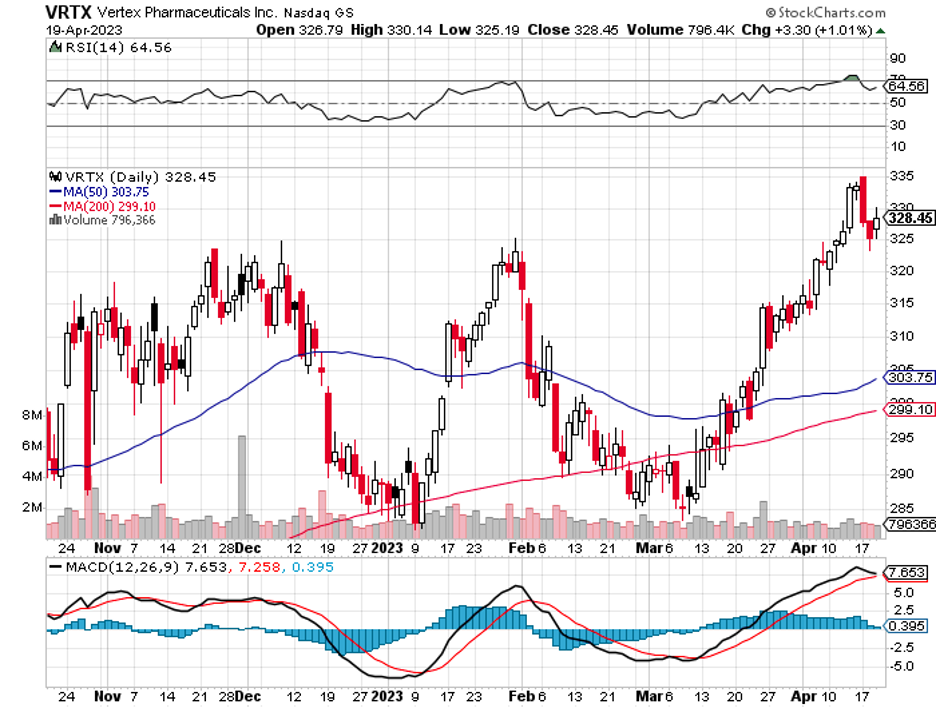
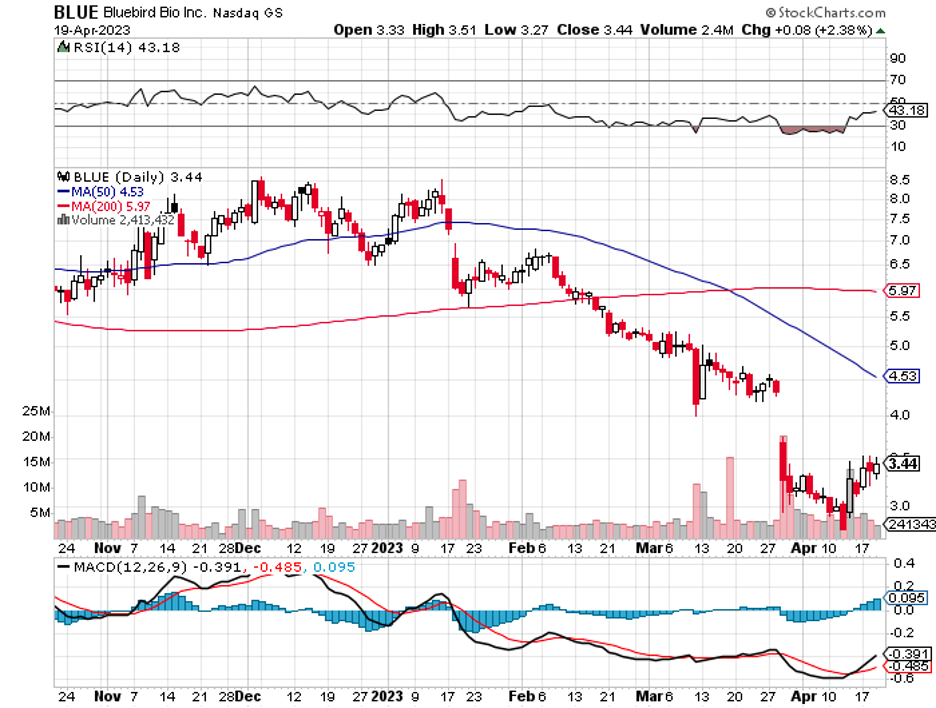
Global Market Comments
March 22, 2023
Fiat Lux
Featured Trade:
(THE MAD HEDGE TRADERS & INVESTORS SUMMIT VIDEOS ARE UP!)
(THE BARBELL PLAY WITH BERKSHIRE HATHAWAY),
(BRKA), (BRKA), (BAC), (KO), (AXP), (VZ), (BK) (USB), (TLT), (AAPL), (MRK), (ABBV), (CVX), (GM), (PCC), (BNSF)
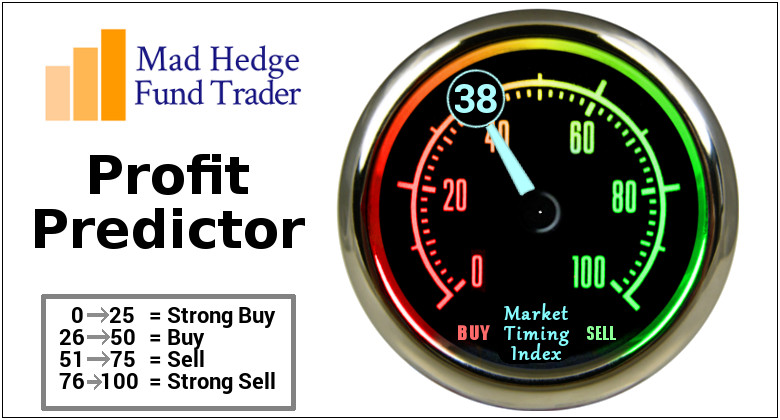
CLICK HERE to download today's position sheet.
Mad Hedge Biotech and Healthcare Letter
February 28, 2023
Fiat Lux
Featured Trade:
(NO REST FOR THE WEARY)
(PFE), (BNTX), (SGEN), (MRK)
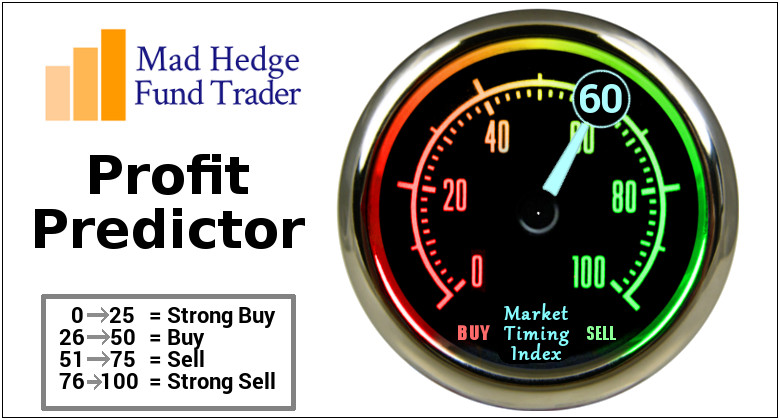
Legal Disclaimer
There is a very high degree of risk involved in trading. Past results are not indicative of future returns. MadHedgeFundTrader.com and all individuals affiliated with this site assume no responsibilities for your trading and investment results. The indicators, strategies, columns, articles and all other features are for educational purposes only and should not be construed as investment advice. Information for futures trading observations are obtained from sources believed to be reliable, but we do not warrant its completeness or accuracy, or warrant any results from the use of the information. Your use of the trading observations is entirely at your own risk and it is your sole responsibility to evaluate the accuracy, completeness and usefulness of the information. You must assess the risk of any trade with your broker and make your own independent decisions regarding any securities mentioned herein. Affiliates of MadHedgeFundTrader.com may have a position or effect transactions in the securities described herein (or options thereon) and/or otherwise employ trading strategies that may be consistent or inconsistent with the provided strategies.
This site uses cookies. By continuing to browse the site, you are agreeing to our use of cookies.
OKLearn moreWe may request cookies to be set on your device. We use cookies to let us know when you visit our websites, how you interact with us, to enrich your user experience, and to customize your relationship with our website.
Click on the different category headings to find out more. You can also change some of your preferences. Note that blocking some types of cookies may impact your experience on our websites and the services we are able to offer.
These cookies are strictly necessary to provide you with services available through our website and to use some of its features.
Because these cookies are strictly necessary to deliver the website, refuseing them will have impact how our site functions. You always can block or delete cookies by changing your browser settings and force blocking all cookies on this website. But this will always prompt you to accept/refuse cookies when revisiting our site.
We fully respect if you want to refuse cookies but to avoid asking you again and again kindly allow us to store a cookie for that. You are free to opt out any time or opt in for other cookies to get a better experience. If you refuse cookies we will remove all set cookies in our domain.
We provide you with a list of stored cookies on your computer in our domain so you can check what we stored. Due to security reasons we are not able to show or modify cookies from other domains. You can check these in your browser security settings.
These cookies collect information that is used either in aggregate form to help us understand how our website is being used or how effective our marketing campaigns are, or to help us customize our website and application for you in order to enhance your experience.
If you do not want that we track your visist to our site you can disable tracking in your browser here:
We also use different external services like Google Webfonts, Google Maps, and external Video providers. Since these providers may collect personal data like your IP address we allow you to block them here. Please be aware that this might heavily reduce the functionality and appearance of our site. Changes will take effect once you reload the page.
Google Webfont Settings:
Google Map Settings:
Vimeo and Youtube video embeds:
